
The Right Wheel Backspacing For Your 4×4 Truck, Jeep Or SUV
Photos: John Cappa and courtesy of the manufacturers
Choosing the correct wheel backspacing can be absolutely critical when installing new aftermarket wheels and tires on a stock or lifted 4×4 truck, Jeep or other SUV. Sadly, the term wheel offset is often mistakenly and incorrectly interchanged with wheel backspacing. Wheel backspacing is the distance from the wheel mounting surface to the back bead edge or brake side of the wheel in inches. Wheel offset, typically indicated in millimeters, measures the distance from the mounting surface of the wheel to the centerline of the wheel.
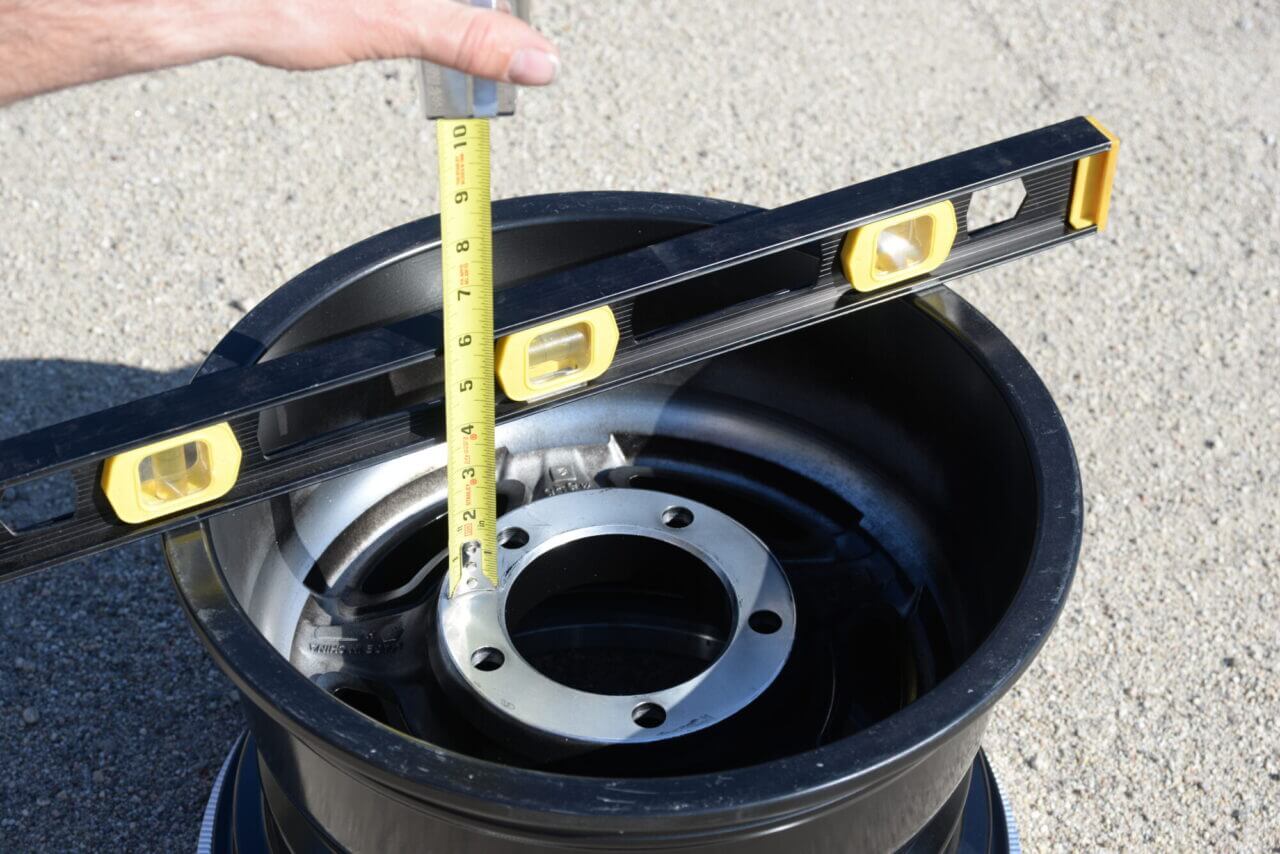
Wheel backspacing is generally measured in inches from the backside of the wheel to the wheel mounting surface. You can use a simple straightedge and tape measure to get a very accurate measurement.
In the wide wheel 4×4 world, wheel backspacing is prioritized over wheel offset when fitting aftermarket wheels and tires on your 4×4 truck, Jeep or other SUV. Follow along to familiarize yourself with wheel backspacing and learn how much wheel backspacing is right for your 4×4.
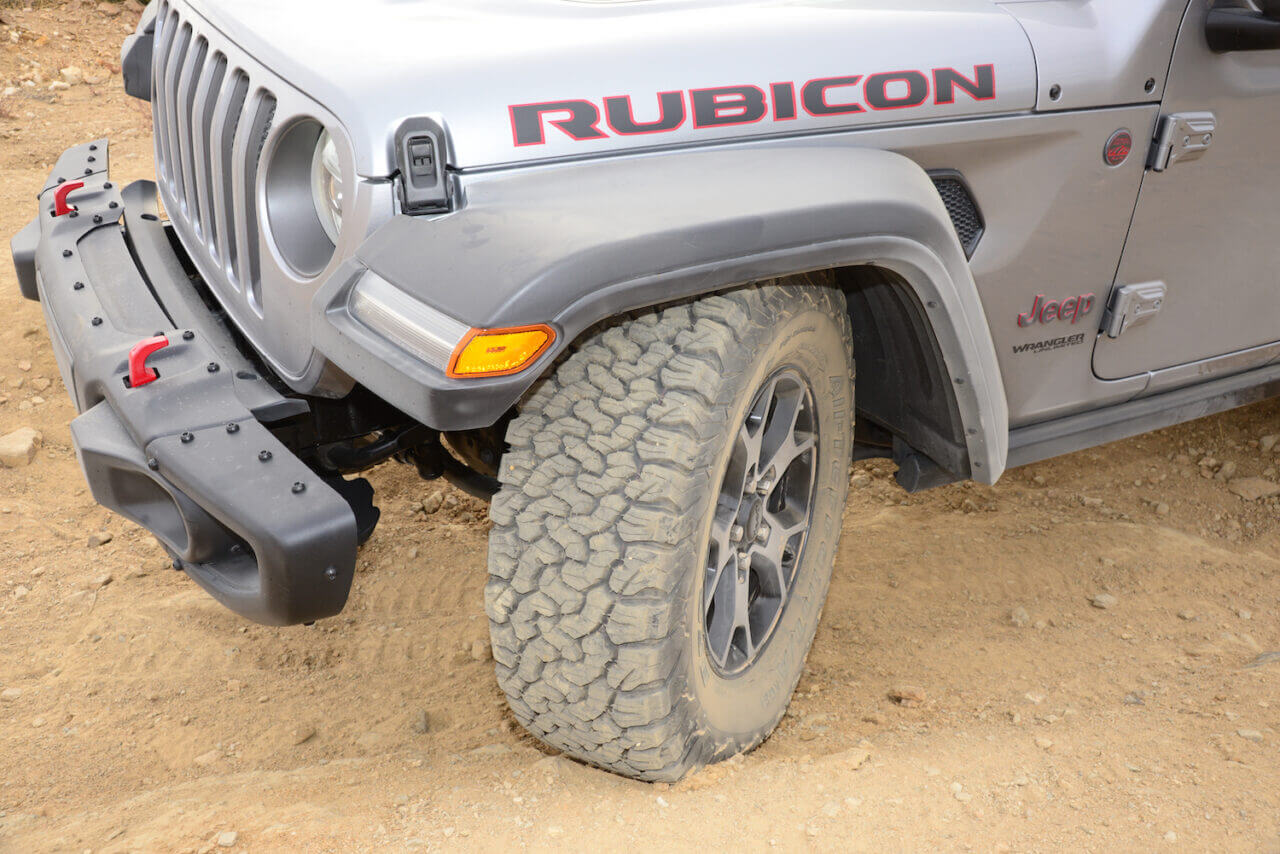
Most factory 4×4 wheels have more backspacing than aftermarket wheels. They are designed this way to tuck the OE-sized tires into the wheel wells. Wheels with factory backspacing are usually good for tires that are one to two sizes larger than stock. For bigger tires you’ll likely need to upgrade to wider aftermarket wheels with less backspacing.
Factory 4×4 Wheels
The original stock wheels on most 4x4s are generally designed to keep the OE-sized tires tucked neatly inside the fender wells. In most cases these OE wheels have 4 inches or more of backspacing. This helps reduce steering effort and improves handling. Unfortunately, increasing the tire diameter and installing a lift on some vehicles can cause clearance issues with the original wheels, especially when turning. Because the wheels have quite a bit of backspacing, the tires are sucked in closer to the frame and suspension components where they can rub on critical parts. It can be tricky when trying to use the stock wheels on your 4×4 with a lift kit and larger diameter tires. You’ll often find that the OE wheels are too narrow and have too much backspacing for tires that are three sizes or larger than stock. However, there are many well-outfitted 4x4s with admirable factory off-road packages that include wheels which are capable of working with tires that are several sizes larger than stock.
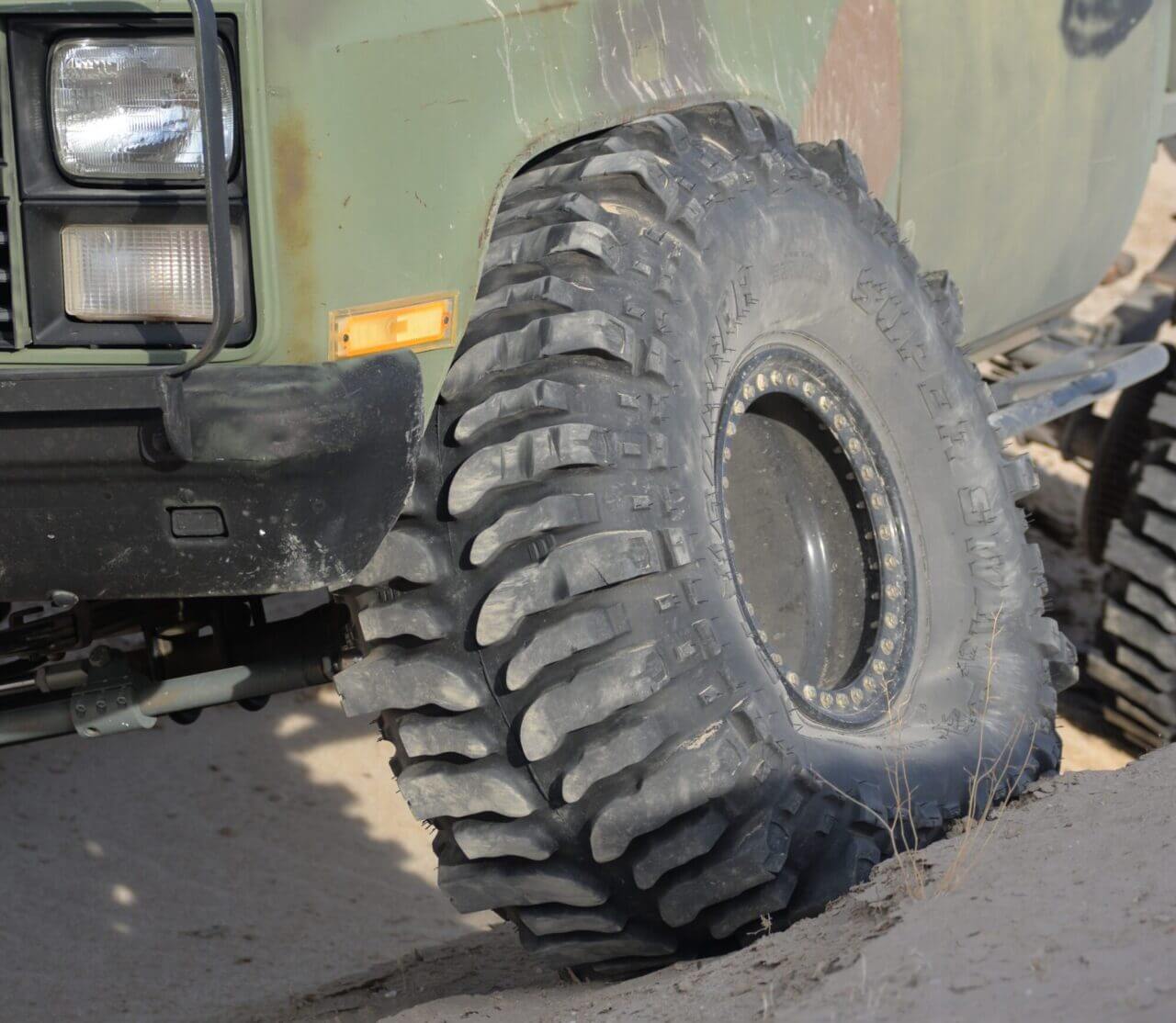
Aftermarket wheels with less backspacing help make more room for larger tires by pulling the tires out and away from the frame, steering and suspension components. However, sometimes this can cause oversized tires to rub on the fenders when the suspension is compressed or the steering is turned all the way.
Aftermarket Wheels
When you step up two to three tire sizes or more, you’ll usually want to shop for new wheels as well. You’ll generally need wider wheels than stock that also have less backspacing than the original wheels. Most aftermarket wheels will have 3.25 to 4.5 inches of backspacing depending on the lug pattern. However, there are some specialty wheels that are available with 3 inches or less backspacing, but they are typically reserved for oddball custom applications that require more clearance around the brakes, suspension, steering or axle. Keep in mind that backspacing of 3 inches or less is not at all ideal. It increases what is called the steering scrub radius, which requires more steering effort and results in poor handling at speeds, especially on uneven roads.

Deep dish wheels typically feature a combination of increased width and reduced backspacing. While this kind of setup is popular for many 4×4 enthusiasts, it can require more steering effort, cause poor handling and prematurely wear out steering and suspension components.
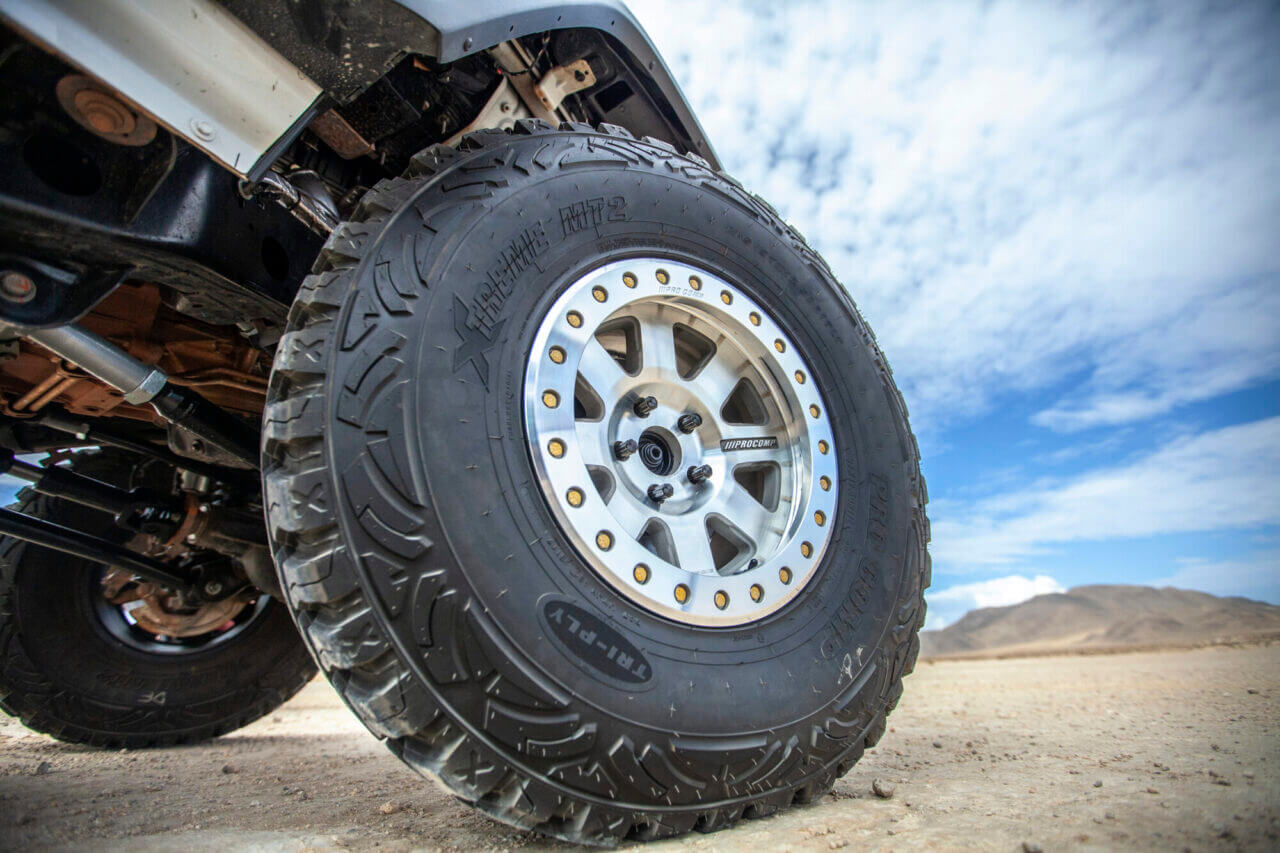
Daily driven 4×4 trucks, Jeeps and other SUVs should make use of proper wheel backspacing. It may not look as flashy as the aggressive stance provided by deep dish wheels with very little backspacing, but it will provide improved tire fitment and a better overall driving experience on- and off-road.
New Wheels With Lift Kits
Some 4×4 suspension designs are more temperamental when it comes to correct wheel backspacing and they can require more real estate behind the wheels than others. For example, A-arm independent suspensions lifted with aftermarket parts often require less backspacing than stock for proper wheel and tire clearance around the A-arms, uprights and ball joints. Too much backspacing in these applications will result in the wheels rubbing on the suspension and steering. Always pay close attention to the wheel backspacing requirements recommended by the lift kit manufacturer to avoid interference. Also, as with most 4x4s, too little backspacing can result in poor handling, but on IFS suspensions it can also cause unusually premature wear on ball joints, bushings, steering components and wheel bearings. Unfortunately, IFS suspensions are a little more susceptible to this kind of wear than solid axle suspensions, so picking the correct backspacing is very important on IFS applications.
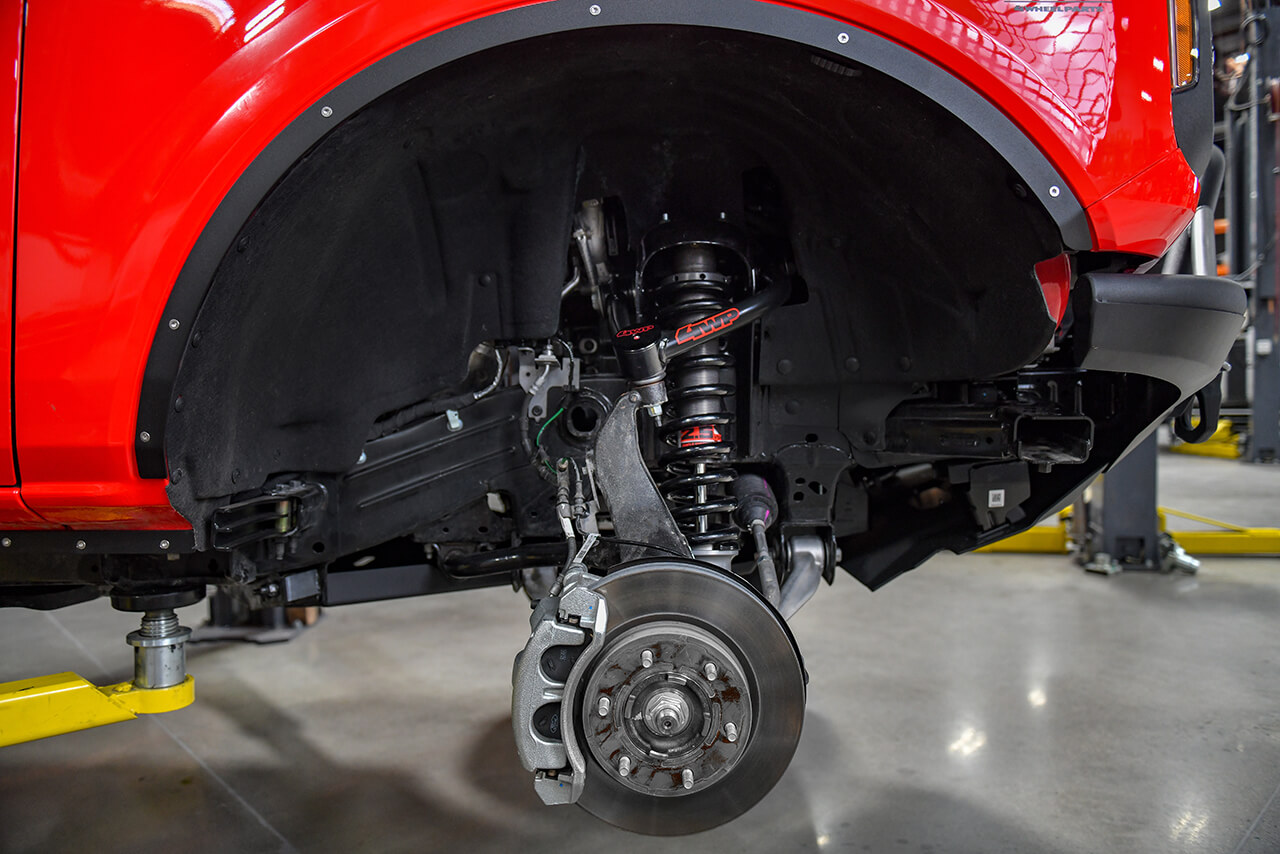
Selecting wheels with the correct backspacing is usually much more critical on 4x4s with IFS suspensions than those with solid axle suspensions. When looking for wheels, follow the lift manufacturers’ recommendations for wheel backspacing and tire diameter to make sure there is ample clearance.
Wheel Spacers
If you have absolutely fallen in love with a specific wheel that has too much backspacing for your application, don’t fret. There is a solution for some vehicles. Wheel spacers are available for many popular 4×4 lug patterns. These spacers bolt to the existing vehicle lug studs and can artificially decrease wheel backspacing by 1 to 2 inches, depending on the wheel spacers used. In most cases wheel spacers are not used on 3/4- and 1-ton trucks that still need to tow or haul heavy loads. The increased leverage that wheel spacers place on the wheel studs makes them less than ideal for heavy-duty or regularly abused applications. When installing wheel spacers be sure to use the included thread locking compound on the lugs securing the wheel spacers and properly torque all of the lug nuts that hold the wheel spacers and wheels in place. Make a habit of inspecting the spacers and check the lug nut torque regularly once the spacers are installed.
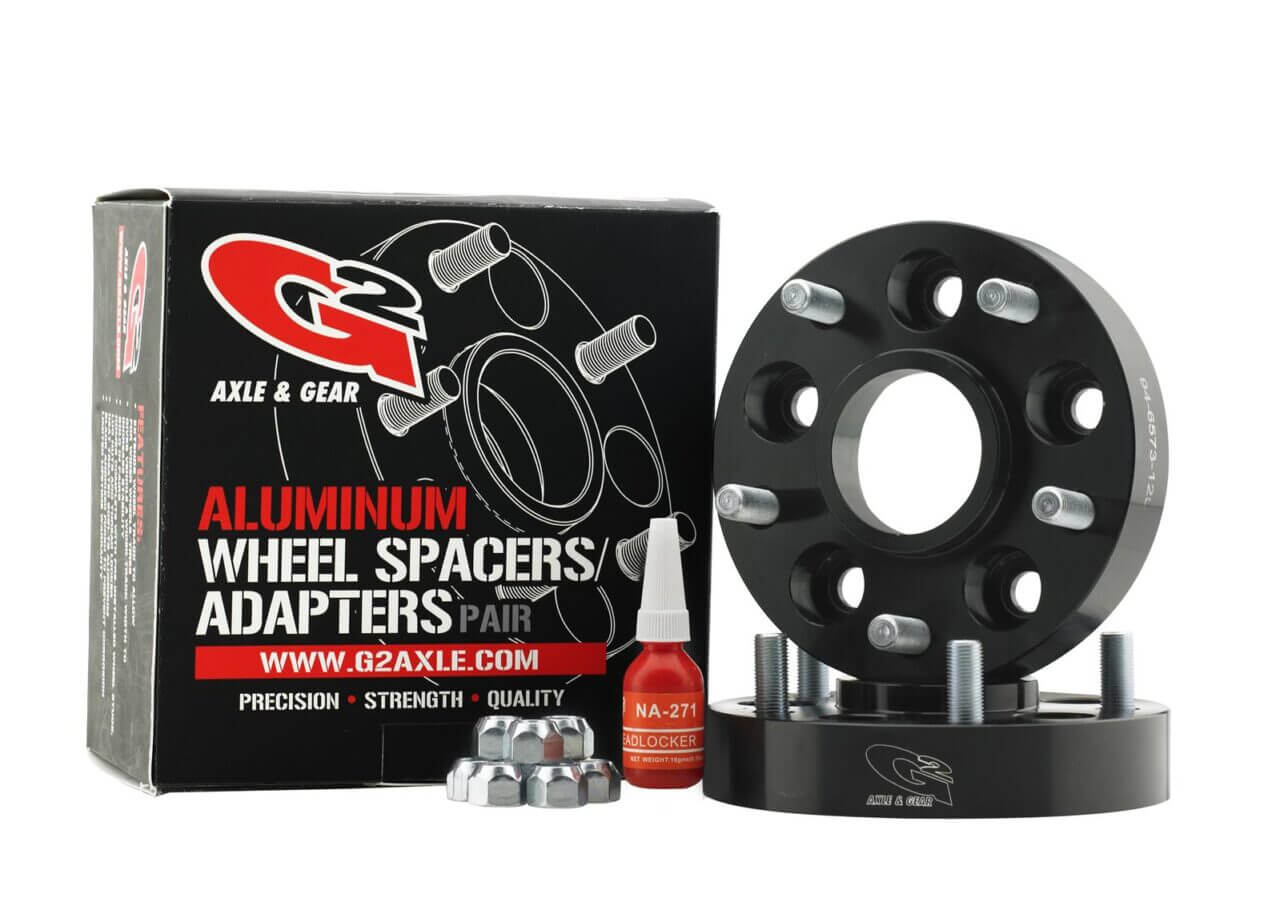
If the wheels you have fallen in love with have too much backspacing for your application, you may be able to fit them through the use of wheel spacers. Wheel spacers are available in a variety of popular lug patterns in widths from 1 to 2 inches. For safety reasons it’s generally best to avoid using wheel spacers on 3/4- and 1-ton trucks that haul and tow heavy loads.



2